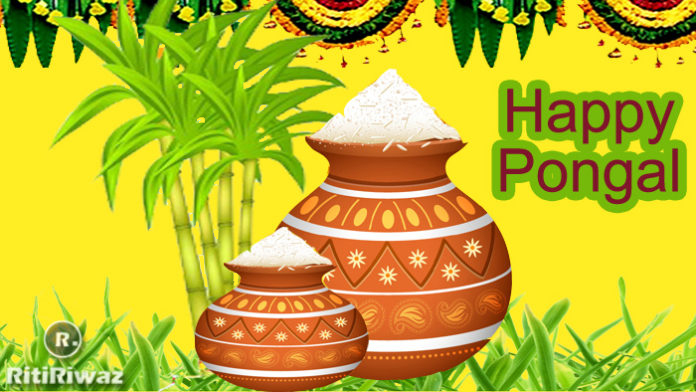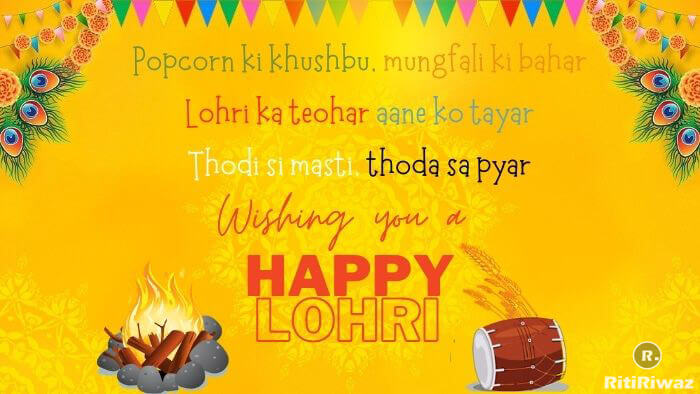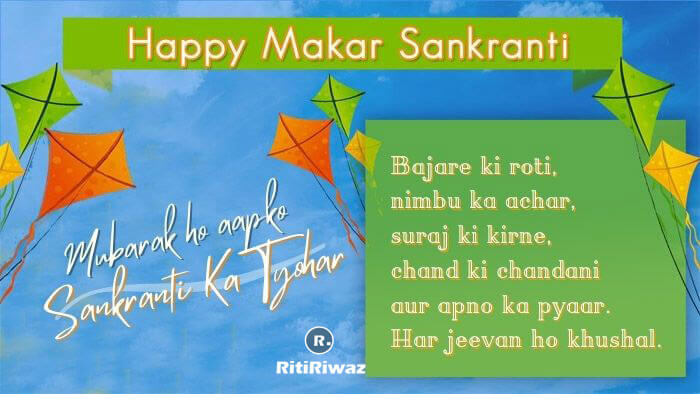Madhya Pradesh – Culture and Tradition
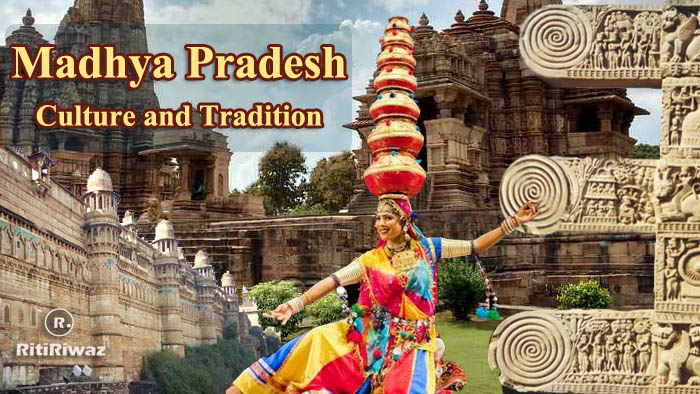
Madhya Pradesh is a state present in central India and is also called the “Heart of India“. The state is bound in the North by Uttar Pradesh, the East by Chhattisgarh, the South by Maharashtra, and the West by Gujarat and Rajasthan.
The physiography is characterized by low hills, extensive plateaus, and river valleys as the state of Madhya Pradesh lie over a transitional area between Indo Gangetic plain (North) & the Deccan plateau (South). With a geographical spread of 308,244 sq. km, Madhya Pradesh commands 9.38% of the country’s total area standing next only to Rajasthan, the largest state in terms of area. The State was bifurcated to Chhattisgarh in the year 2000.
The state of Madhya Pradesh has the following natural regions – Malwa Plateau, Plateau of Central India, Bundelkhand Plateau, Rewa, and Panna Plateau, Narmada-Sone Valley, Satpura and Maikal Plateau, and Eastern Plateau.
All these regions show distinct linguistic, cultural, and geographical patterns. Malwa is a plateau region in the northwest area to the north of the Vindhya Range. Indore is the major city in this region, while Ujjain is an important historical town in the Malwa region.
The history, geographical location, natural beauty, cultural heritage, and people of this state make it one of the best tourist destinations in India. Its capital is Bhopal, which is famous as the city of lakes.
History
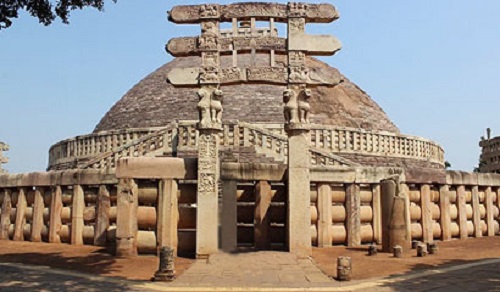
Madhya Pradesh, as a state came into being way back in 1956 and a new state of Chattisgarh carved out of it, came into existence in the year 2000. Madhya Pradesh, as is understandable from its name itself, enjoys a central location.
Madhya Pradesh’s history dates back to the prehistoric age. The United Nations Educational, Scientific, and Cultural Organisation (UNESCO) has declared three locations in the state as heritage sites: Temples at Khajuraho, Buddhist Monuments at Sanchi, and Rock Shelters of Bhimbetka.
In about 320 BCE, Chandragupta Maurya collected northern India, including present-day Madhya Pradesh. Emperor Ashoka of the Maurya Empire held firm control over the region. After the fall of the Mauryan Empire, battles took place between the first and third centuries CE between the Saka, Kushan, Satavahana, and many endemic kingdoms to occupy the region. Helidorus, the Greek ambassador of the court of the Shunga king Bhagabhadra, also built Helidorus Pillar near Vidisha.
Ujjain has been the main trading center of western India since the first century BCE, the city is situated on the way to the Gangetic plains and the Indian Arabian Seaport. A fierce battle ensued between the Satavahana kingdom of the northern Deccan and the Saka kingdom of the western region between the first and third centuries CE to gain control of Madhya Pradesh.
King Gautamiputra Satakarani of Satavahana conquered the Saka Empire and also conquered Malwa and Gujarat in the second century. Later in the fourth and fifth centuries, the area came under the control of the Gupta Empire and the southern neighboring Vektaka. The stone temple in the tiger cave of Kukshi tehsil of Dhar district shows evidence of the existence of the Gupta empire, as well as the Badwani inscription dating to around 487 CE.
The invasion of the white swan led to the collapse of the Gupta Empire and this split the kingdom into small parts. In 528, King Yashodharman of Malwa defeated Hans and prevented his development. Later Harsha (C. 590–647) ruled the northern part of the state. From the eighth century to the tenth century, Malwa was ruled by the South Indian Rashtrakuta Empire. When the South Indian Emperor Govind II of the Rashtrakuta Empire took over Malwa, he established a family of his allies, which was named Parmar.
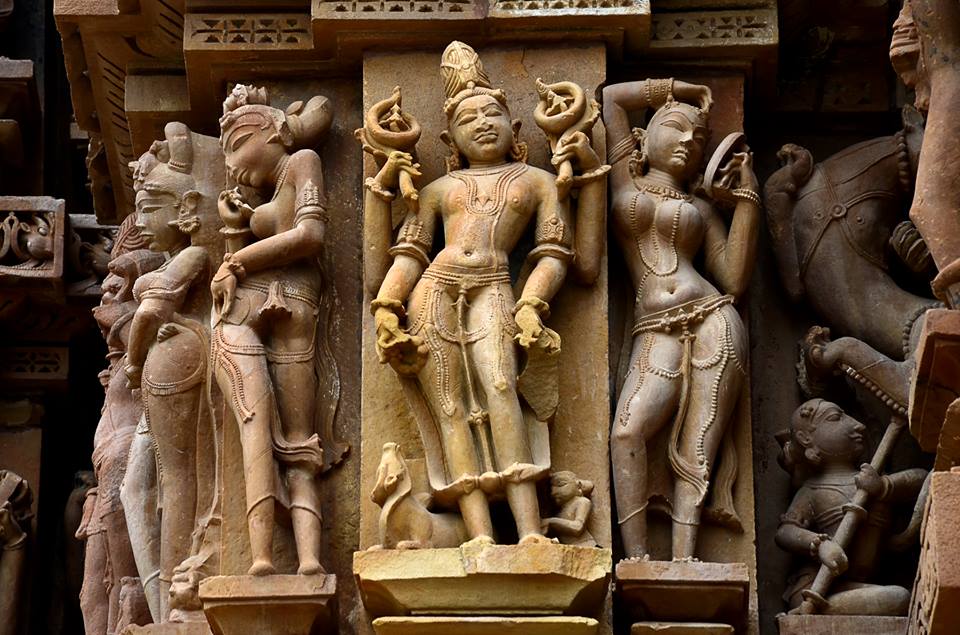
The Rajput dynasty developed in medieval times, including the Paramaras of Malwa and Chandela of Bundelkhand. Chandela built temples at Khajuraho, which represent the culmination of the architecture of Hindu temples in central India. The Gurjar-Pratihara kingdoms still dominate North and west Madhya Pradesh. Some historical monuments also exist in Gwalior.
The southern part of Madhya Pradesh like Malwa was invaded many times by the South Indian Western Chalukya Empire, which imposed a lot of rules on the Parmar kingdom of Malwa. Northern Madhya Pradesh was captured by the Turkish Delhi Sultanate in the 13th century. Towards the end of the 14th century, with the end of the Delhi Sultanate, an independent religious empire was discovered, including the Tomar Empire of Gwalior and the Muslim Sultanate of Malwa. In 1531, the Gujarat Sultanate annexed the Malwa Sultanate. Most of the state came under the control of Sher Shah Suri in 1540 and was later captured by the Hindu Raj Hemu.
After Akbar defeated Hemu in the Second Battle of Panipat in 1556, much of Madhya Pradesh came under the control of the Mughals. Gondwana and Mahakoshal remained under the control of the Gond kings, who had accepted Mughal supremacy but were enjoying virtual autonomy. After the death of Emperor Aurangzeb in 1707, the Mughal control of the kingdom weakened. Between 1720 and 1760, the Marathas gained control of many parts of Madhya Pradesh.
Famous Maratha rulers of the region included Mahadji Shinde, Ahilyabai Holkar, and Yashwantrao Holkar. After the Third Anglo-Maratha War, the British took control of the entire region. All the dominating states of the region had become provincial states of British India, which was controlled by the Central India Agency.
In 1857, the independence revolution took place in the northern part of the state under the leadership of Tatya Tope. While the British and Prince Royal crushed it. Many anti-British activities have taken place in the state and during the Indian independence campaign, many people jointly opposed the British.
Many famous leaders like Chandrashekhar Azad, BR Ambedkar, Shankar Dayal Sharma, and Atal Bihari Vajpayee were born in Madhya Pradesh. Also, two famous singers, Tansen and Baiju Bawra were born in Madhya Pradesh. Famous playback singers Kishore Kumar (Khandwa) and Lata Mangeshkar (Indore) are also residents of Madhya Pradesh.
After India’s independence, the state of Madhya Pradesh was established on 1 November 1956 by merging the erstwhile British Central Provinces and the provincial states of Berar and Makri and Chhattisgarh, at which time its capital was Nagpur.
The states of Central India, Vindhya Pradesh, and Bhopal were established by the Central Indian Agency. In 1956, Central India, Vindhya Pradesh, and Bhopal were merged into the state of Madhya Pradesh and Nagpur was added to the Marathi-speaking southern region of Vidarbha and incorporated into the Bombay state. First Jabalpur was made the capital of the state, but due to political pressure at the last minute, Bhopal was made the state capital. In November 2000, the state of Chhattisgarh was divided by dividing the south-eastern part of the state under the Madhya Pradesh Reorganization Act.
Language
The most commonly spoken language of the state is Hindi which is also the official language of the state. Urdu, English, and Marathi are the other languages used. The local languages of the state include Malvi, Bundeli, Bagheli, and Nimri, other local dialects are also spoken in the state.
Culture of Madhya Pradesh
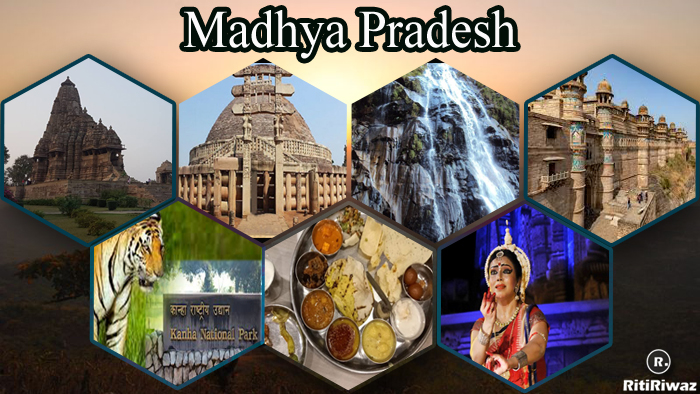
Madhya Pradesh has a population of about 60.38 lakhs (2001 census), an increase of 24.34%, and a population density of 196 persons per square kilometer. More than 75% of the state population lives in villages whose main occupation is agriculture, while the rest of the population lives in cities.
Indore district is the most populous state and has a population of 919 per thousand males (sex ratio), where the literacy rate is 63.70%. The majority population is Hindu with Muslims making up the largest minority community. The lifestyle, culture, and customs of this community are mostly similar to those of Hinduism, although they also strongly believe in orthodox traditions.
The Gonds are the most famous tribe and the largest group in Madhya Pradesh. The Bhils, the second-largest tribe, are largely concentrated in the vicinity of Jhabua, Kharagon, Dhar, and Ratlam. The Begas consider themselves descendants of the Dravidians and are found in this backward class in Mandla, Balaghat, Shahdol, and Sidhi districts.
The Bharia tribe is in the main concentration in the Jabalpur and Chhindwara districts of Madhya Pradesh. The Korku tribal community is administered by a panchayat (called sarpanch) and they are found in Hoshangabad, Baitul, Chhindwara, Harda, and Khandwa districts of Madhya Pradesh. The Santiyas are a tribe of Malawas who themselves are originally considered a martial Rajput tribe. Some tribes like Dhanuk, Panika, and Solar still form an important group.
Costume of Madhya Pradesh
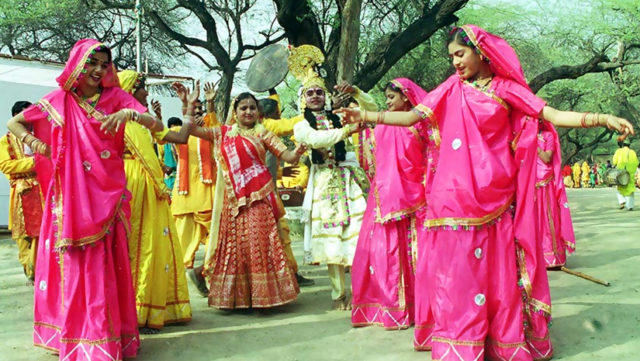
Madhya Pradesh is in the center of the Indian subcontinent and is known for its breathtaking natural beauty with much architectural evidence as people of Madhya Pradesh there dressing is also diverse. The main reason for the diversity in clothing is the various textile techniques used.
The main clothing of women in Madhya Pradesh is ghagra choli where ghagra is a long skirt while choli is its top blouse worn with varied styles of odhni or dupatta. Batik, tie, and dye are the main patterns of printing used on their traditional dresses. Ornaments play a major role in the dress of tribal women.
Men in Madhya Pradesh wear traditional dhoti with a headgear known as Safa or Pagadi like many other Indian states. Men also wear Mirzai a jacket of black or white color. The costume of urban Madhya Pradesh is similar to other parts of India, women usually wear saree or salwar suits and men can be seen wearing shirts and pants.
Suggested Read: Traditional Dresses Of Indian States
Cuisines

Madhya Pradesh cuisines vary as you move from one place to another, each place’s cuisine has its own cultural and historical legacy. Wheat, jowar, and maize are mainly used grains in people’s food.
The Bundelkhand cuisines are influenced by their historic rulers and their climate and geographical condition, they have their own unique Bhundeli hospitality. The main dishes are Murar Ke Kebabs, Kodu Til Ka Baat (rice with black sesame), and the Bhundeli Ghost.
The upper eastern valley of the Narmada is influenced by Rajasthani, Gujarati, Maharashtrian, and a tribal style of cooking and is called Mahalkhoshal Cuisine. Their taste has evolved with time and modernity while retaining much of its authenticity. Some of the region’s favorites are Meva Bati, Gulab Jamun, and Tikkis.
Bhopal has a lot of non-vegetarian dishes and is called “Meat Lovers Paradise”. Their Sheek Kebab is made of minced lamb, fresh mint, curry paste, green chilies, etc. the Keema Pulav, the Chicken, or Mutton pilaf are very popular and in the end, comes the “Bhopaali Paan.”
The Guptas, Sindhias, and the Mughals ruled Gwalior for centuries and have given enough mixture of different cultures to the area. Gwalia kebabs, rogan josh of Gwalior way is very popular and the ‘must-have’ of this city is the Gwalior biryani.
Madhya Pradesh has Malwa cuisine, Nimar cuisine, and Bagelkhand cuisine which have a lot to offer. The Rass Kheer, Lapsi, Kalakand, Lavang Latika, Palak Puri, Bhutte Ki Khees (grated corn roasted in ghee and later cooked in milk with spices). Amli Ri Kadhi made with tamarind instead of yogurt, Khoprapak and Malpua are distinct here and sure to be loved. Popular drinks and beverages include lassi (buttermilk), sugarcane juice, sulfi (liquor distilled from the flowers of mahua tree), and date palm.
Suggested Read: Famous Food Of Indian States
Fair and Festivals
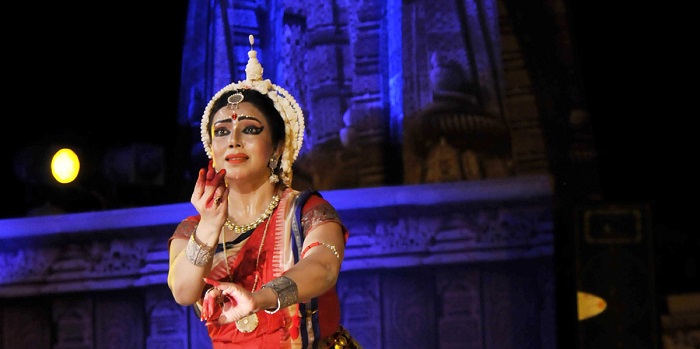
The province of Madhya Pradesh is the environment of fairs and festivals, which has also become the mantra of its style. In other words, the culture of Madhya Pradesh develops due to the excellent festival celebration. Apart from celebrating all other Indian festivals like Holi, and Dussehra, tribal festivals, and fairs are also celebrated with full enthusiasm and fun.
The most popular festival in the state is the Khajuraho Festival of Dance, Tansen Music Festival, Shivratri Mela, Pachmarhim Navratri Festival, Chethiyagiri Vihara Festival, Madai, Bahgoriya, Fair of Nagaji, and Nimar Utsav.
Religious festivals are also celebrated with worship. In the Nimar and Jabua regions west of Mandhyanchal, a colorful festival called Bhagora Hat is visited by the Bhil and Bhilala tribes. Before the Holi festival in the month of March, it is a large-scale ‘Swayamvara’, whose existence is alive.
Suggested Read: Jyotirlinga Temple
Dance and Music
The famous dance of Madhya Pradesh is Karma Dance, Muria Dance, and Kaksar Dance while Kuchipudi, Bharatnatyam, Odissi, Kathak are also famous. Karma Dance is the major dance for the people of the Gond and Oraon tribes who reside in the northwestern parts of Madhya Pradesh and is performed by both men and women. This dance is performed to welcome the spring season. Muria dance is a folk dance that symbolizes the culture and tradition of the Madhya Pradesh tribe people.
During marriage ceremonies, Har Endanna dance is performed. Kaksar Dance is performed by the Abujmaria tribes of Bastar to please god and seek his blessing for a good harvest. Relo, Gooning, Leja, Chait Parah, Dhankul music are common among people of Madhya Pradesh.
Art and Craft
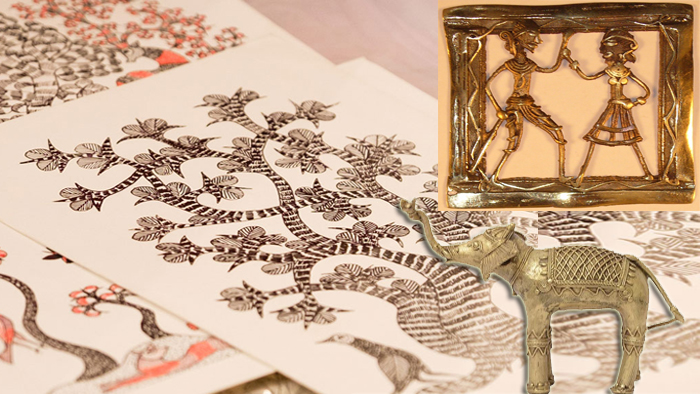
Lok chitrakar, Chitravan, Mandana, Sanjhi, Thapa, Pithora painting are popular in Madhya Pradesh. Dhokra art is the beautiful artifacts, statues made by the non–ferrous metal casting of copper-based alloys that use the lost-wax casting technique are very popular among tribes.
Gond art originates in the Gondwana region of Madhya Pradesh in which the role of the canvas is often played by walls and doors. Pithora paintings have bright colors and animated figures often reflect the joyful sentiments of the tribe and the artists. Undoubtedly then, these mark the beginning of auspicious occasions like a wedding, festivals, and childbirth. Other popular arts of Madhya Pradesh are Marble Art of Bhedaghat, Nandna Print, Batik print, Bagh printing, Maheshwari saris weaving, and Durrie weaving.
Suggested Read: Amarkantak
The famous personality of Madhya Pradesh
1. Atal Bihari Vajpayee was born in Gwalior
2. Kishore Kumar born in Khandwa
3. Lata Mangeshkar born in Indore
4. Dr. B R Ambedkar born in Mhow
5. Ustad Amir Khan born in Indore
6. Pandit Kumar Gandharva lived in Dewas
7. Salman Khan was born in Indore
Tourism of Madhya Pradesh
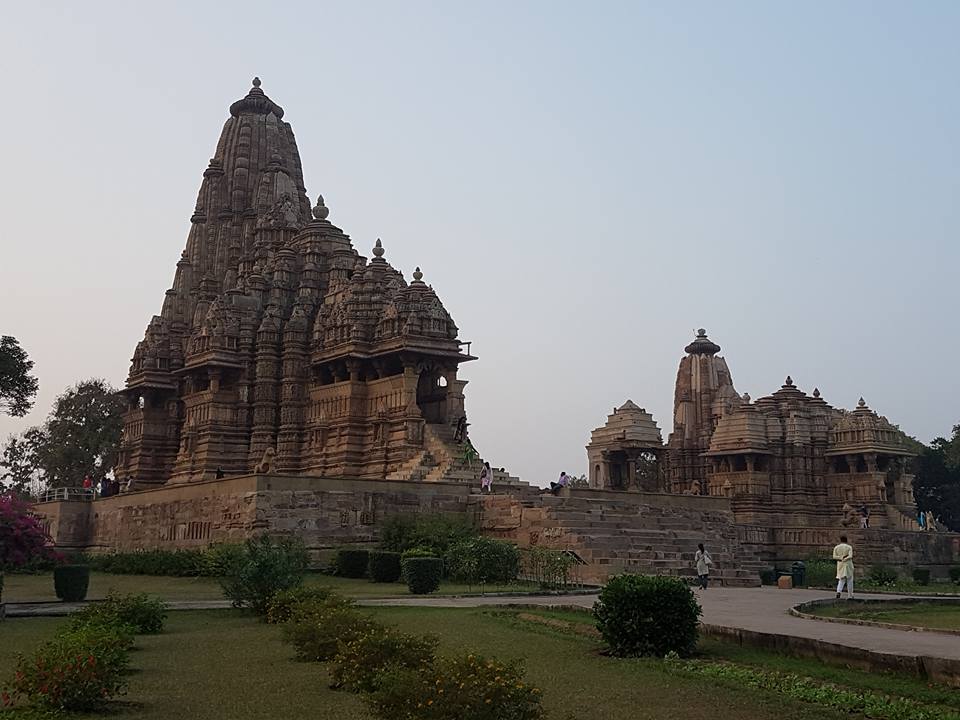
The state provides all the important pillars of Indian tourism such as pilgrimage, wildlife tourism, heritage tourism, Buddhism, adventure sports, etc. Kalidasa, the famous Sanskrit poet in the fourth century, has given a beautiful description of the state in “Meghdootam”.
A beautiful and attractive state like Madhya Pradesh attracts millions of travelers every year. And the present Madhya Pradesh has not only maintained its ancient beauty but has also created a special attraction for the present travelers. The scenic beauty of Madhya Pradesh’s mountains, forests, and rivers is enchanting. Also, there are many wildlife sanctuaries here. The cultural diversity of the state of Madhya Pradesh is also worth seeing.
Madhya Pradesh is resplendent with the Vindhya and Satpura hills. Also, the rivers flowing here make their landscape even more clear. The scenic view of the rivers flowing through the mountains in Madhya Pradesh is definitely worth seeing.
The forests here are also very dense and we find various species of wildlife in the forests here. In Bandhavgarh of Madhya Pradesh, we also see a white tiger. Also, we can see various species of wildlife in Kanha National Park, Bandhavgarh, Pench, Shivpuri, Panna, and many other national parks.
Prominent sites are Khajuraho popular for its erotic, picturesque and nude idols, Kanha, Sanchi, Mandu, Gwalior-Shivpuri, Pachmarhi, Bandhavgarh, Satpura National Park, Pench, Amarkantak, Ujjain, Omkareshwar, Bhahraghat, Orchha, and Chitrakoot and dynamic trade centers of Bhopal and Indore.
Suggested Read: Formation Dates of Indian States



